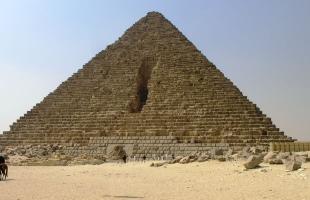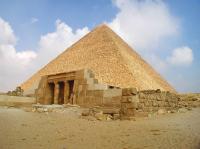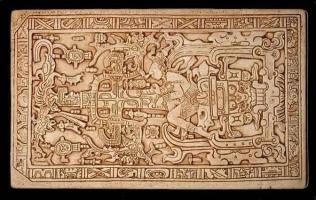The Step Pyramid of Zoser
What is in theory the first pyramid built in the world appears, in the light of papyrus and hieroglyphics, to be a much older monument than is believed, more similar to Mayan temples than to the typical architecture of Ancient Egypt.

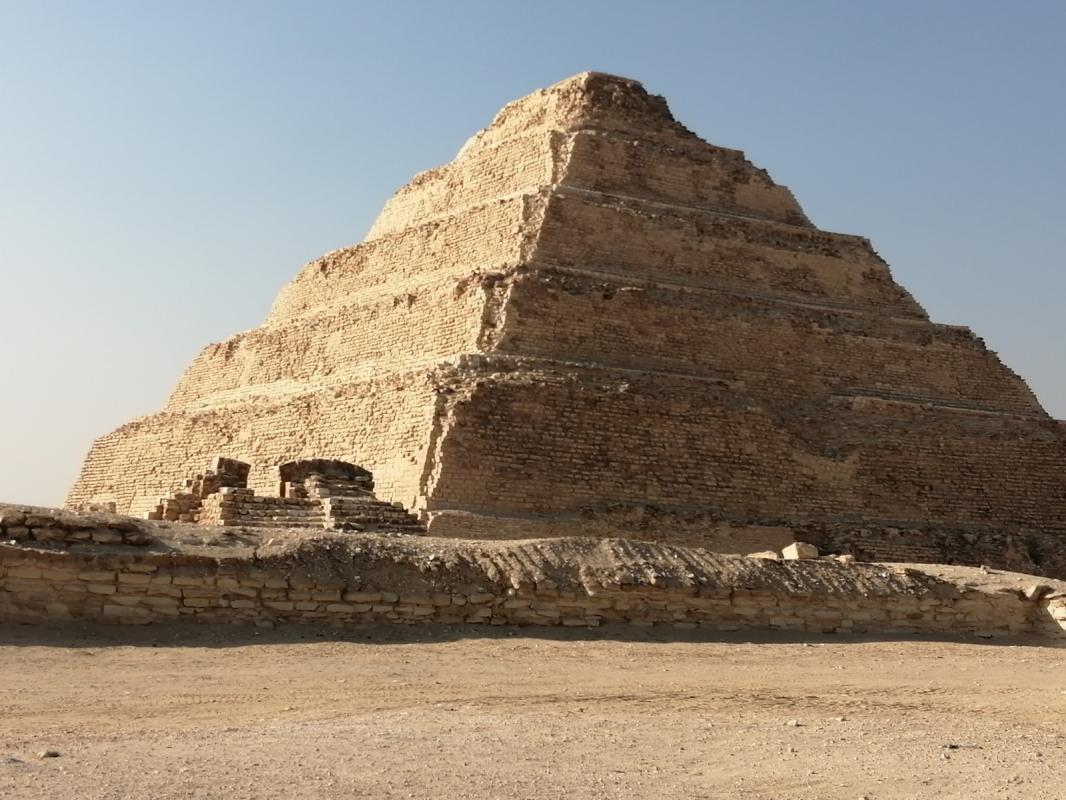
Talking about Egyptian pyramids scientifically today is nearly impossible. On one side, there are Egyptologists and "pyramidologists" fanatically clinging to 19th-century beliefs, convinced that the pyramids were built by the oldest Pharaohs. On the other, there are incredible discoveries documented by modern researchers open to new theories, who are nonetheless snubbed (if not fiercely attacked) by official Science. Over all of this, shadowy figures with political interests spread discredit and trivialize to propagate the most conservative and reassuring ideas for the general public. However, if there's a place where a pre-flood past emerges in all its splendor, it's Egypt: with lost arks, electric lamps, energy generators, and megalithic constructions, one wonders how ancient that civilization is. A probable answer is provided by the Step Pyramid attributed to Djoser, located in Saqqara.
All orthodox Egyptologists agree that the Pyramid of Djoser is the first pyramid in human history, a large-scale evolution of the Sumerian ziggurats that existed during the time of Pharaoh Djoser (or Djoser-Neteri-Khet), who lived between 2636 and 2616 BCE.

According to the story we've been told since elementary school, Djoser, envious of the grandeur of the Sumerian temples, asked his prime minister and vizier, the scientist Imhotep, to construct the world's largest funerary complex: the necropolis of Saqqara, located 30 km south of Cairo. The center of this complex was the Step Pyramid, which is 63 meters high, 125 meters long, and 109 meters wide, thus having a rectangular plan, built with a series of small limestone blocks.
The pyramid emerged as a multiplication of the mastaba, the rectangular tomb that until then had been the most common type of burial. Imhotep stacked six mastabas, each smaller than the one below it, with each layer being about 10 meters high. Following this example, all subsequent Pharaohs, for at least 150 years, wanted a similar monument (at least according to official Egyptology theories).
After Djoser, his son Sekhemkhet attempted to build his own pyramid but failed. He was succeeded by Khaba, who built the Layer Pyramid (16 meters high) at Zawyet-el-Aryan, 7 km north of Saqqara. The Unfinished Pyramid was started by Baka; Snefru, founder of the Fourth Dynasty, built four pyramids, one at Sila, two at Maidum, and two at Dashur, including the famous Bent Pyramid and the first "true" pyramid, the Red Pyramid.
Then came the famous Pharaohs Khufu (Cheops), Khafre (Chefren), and Menkaure (Mykerinos) to construct the colossal Giza complex.

But the remarkable thing about all this is that, apart from the minor pyramids, there is no shred of evidence, hieroglyphic or papyrus, attributing these pyramids to the Pharaohs!
Khufu is a rather strange term and probably does not refer to a human being but to an energy (literally meaning "May he protect me," more of an invocation than a name!). It is absurd to think that Khafra is a person's name: the only inscription referring to him was found at the foot of the Sphinx, on a very worn stele from the time of Pharaoh Thutmose IV, where in line 13, the first syllable mentions a "Khaf" and a "statue raised for Atum-Hor-em-Akhet." Khaf means "oxen," or alternatively "creative power," and the name Khafra was invented by the English philologist Thomas Young in 1817 by adding the syllable "ra" (the god Ra) to Khaf.
Thus, it is a non-existent term, fabricated perhaps to align it with the names of the Egyptian pharaohs described by Herodotus, who apparently was the first to attribute the two largest pyramids at Giza to Cheops and Chephren. The absolute lack of documents proving their existence renders the attribution to these two hypothetical pharaohs completely fanciful, and such habits were indeed often present in Herodotus' works. Menkaura, on the other hand, did exist, but his texts never mention the construction of a pyramid, only restoration work, as if the three pyramids at Giza had been there for millennia. The same can be said of Djoser.

There is no documentary evidence attributing the construction of the Saqqara necropolis to Imhotep and thus no factual basis for the dedication of the funerary temple to Djoser.
Imhotep's name appears as a hieroglyph in the inner gallery, but it is a later painting from 1500 BCE, when the architect had been deified (and thus has no certain historical foundation). However, it is astonishing to read in the few fragments that have reached us from the Egyptian historian Manetho that the Step Pyramid had been open to visitors for over a thousand years before the reign of Neterkhet, a Pharaoh of the Third Dynasty who ascended to the throne in 2660 BCE!
Therefore, a historical account from a witness living in the fourth century BCE, in a culturally similar era to the ancient one, tells us that the Step Pyramid was built at least in 3660 BCE, which indicates a time well before the official birth of Egyptian civilization.
Peter Kolosimo, in his book "Timeless Earth," argues that the traditional theory viewing the Step Pyramid as merely a mastaba multiplied by six is strange. The reference to the Maya and Toltec pyramids (later colonized by the Aztecs) is evident; the steps are not perfectly rectangular with right-angled steps, as would be logical to expect from a superimposition of six parallelepiped-shaped mastabas, but the vertical sides are inclined, projecting, like in the Maya temples, the believer towards the sky. The inclined sides represent the degrees of spiritual ascent towards the sky, an ascent that in a certain sense recalls the human chakras (six are present physically on the body, the seventh is above the head).
A solar, or rather stellar, meaning confirmed by the number 6, symbolizing the union of the material with the spiritual, the sky with the earth: the famous hexagram, or Star of David, symbolized "as above, so below" and thus the need for Man to behave in accordance with natural laws, because the infinitely small reflects the infinitely large. A concept identical to that of modern Physics.
Therefore, the Step Pyramid, far from being a multiple mastaba, was a place of connection with the stars, we might say, using biblical terminology, a Porta Coeli.

But, as often happened with Maya pyramids, one temple was accompanied by another similar one, according to a concept akin to the Taoist Yin-Yang and the Maya Hunab-Ku. It seems that the "unfinished pyramid" attributed to Djoser's son, Sekhemkhet, is the twin structure of Saqqara.
Peter Kolosimo tells us that an Egyptian scientist of Jewish origin, Zakharia Ghoneim (or Goneim), through meticulous study of the proportions and measurements of the Step Pyramid, managed to find the perimeter wall of the foundations, 7 meters high and made of Tura limestone blocks. He identified the entrance to the underground of this collapsed and destroyed twin structure, which was about 70 meters high with a perimeter of 120x120 meters.
Indeed, during the 1950s, amid dramatic excavation work that ended in accidents and collapses causing some worker deaths, Ghoneim found a hidden chamber 40 meters below ground level. In a large room very much like a cave, a marble sarcophagus (though some say it was white quartz) was found, covered by a sliding panel. But like those in other pyramids, it was completely empty, possibly looted by tomb robbers, devoid of any human trace.
Ghoneim then found a second gallery that disappeared underground and began to explore it, but first the Suez Crisis in 1956 and then the sudden death of the archaeologist, who mysteriously committed suicide by throwing himself into the Nile in 1957, thwarted all the data collected up to that point. It is unknown who preserved these analyses.
Other archaeologists, friends of Ghoneim, conducted excavations at Saqqara in 1963, but they could not work inside the chamber of Sekhemkhet's collapsed pyramid. It is certain that modern Egyptologists prefer to search for mummies and recent tombs rather than underground chambers... And it is absurd because that very mysterious chamber, adorned only with its squared white marble basin, still has much to tell us.
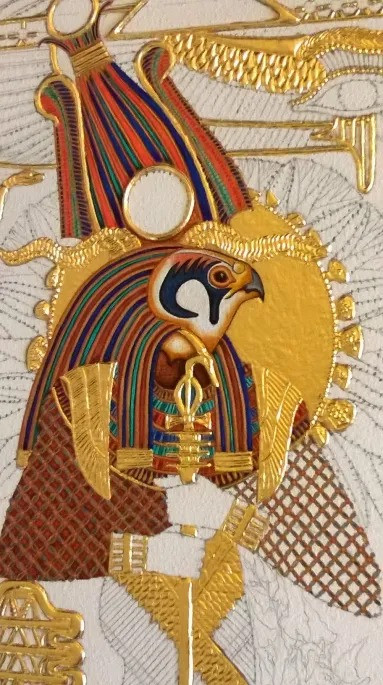
Unfortunately, this lack of information often leads to unorthodox conclusions from researchers who misinterpret the established data. This is the case with the famous Zed at Saqqara, as supported by Mario Pincherle. The Italian scholar, a veteran of mystery and author of some ingenious discoveries, ends up making unfounded claims when he suggests in his books that the gigantic granite Zed above the King's Chamber in the Pyramid of Cheops was originally placed on top of Djoser's Step Pyramid and later moved (despite its total weight of over 500 tons!) to Giza during the construction of that structure. As evidence, Pincherle cites the roof of the Step Pyramid, made of diorite, an extremely hard and resistant mineral, nearly impervious to weathering. However, these are senseless conjectures that create more questions than they solve. We prefer to stay grounded and use logic and the human sciences.
Graham Hancock and Robert Bauval, in their now-classic "Keeper of Genesis," have shown that the Sphinx, if not the pyramids of Giza, was built in a remote era, astronomically datable to around 10450 BCE. Assuming that Djoser's Pyramid was not built in 2630 but a thousand years earlier, we can see in it a decline, a loss of knowledge and technology. This is evident in the case of Snefru's pyramids: some perfect, others "indecisive," others decidedly inferior. Such diversity in style and condition makes no sense: if Djoser could have his pyramid thanks to the architectural knowledge of his vizier Imhotep, it's unclear why his successors could not access the same knowledge.
The reality, beyond the reassuring fairy tales of our academic friends and the pseudo-delusions of some esotericists, is that human history has followed a completely different course. From an era of exceptional knowledge and scientific culture equal to, if not greater than, today's, there has been a gradual loss of this knowledge. Giza, as well as the Red Pyramid, are much older than the Step Pyramid or even the Bent Pyramid.
It is certainly plausible that the three pyramids of Giza are a terrestrial reproduction of the three stars of Orion's Belt: Alnitak, Alnilam, and Mintaka. This stellar reference underpins the cult of the god Osiris-Orion, associated with life and rebirth, and thus the three constructions carry a message of rebirth, salvific and divine. But Saqqara had another deity as its guardian, the god Sokar, very similar to Osiris and, according to some scholars like Andrew Collins, symbolically present in the original design of the Giza Plateau. Sokar is likewise a god of the afterlife, associated in Kemetic worship with Osiris and the architect of the universe, Ptah.
All three are mummiform and linked to death, but they also represent a creative and generative force, a physical and spiritual power to give (or restore) life. Sokar was often associated with a falcon, similar but not identical to Ra, the sun god, and also to Horus and the particular deity known as Horus the Elder (Her-Wer, Haroeris), who is not the son of Osiris and Isis but another form of cosmic and solar deity.
Ancient Egypt had a religion that embraced these overlaps. In practice, a principal god, a Netjer, was accompanied by others that represented its aspects, and such fusions were not uncommon, following a process of theological genesis not unlike that used today by the Christian clergy.

If Osiris is associated with Giza and holds cosmic, stellar, and supernatural significance, in our opinion, Sokar represents the earth, the underworld, the darkest and most hidden part of the journey to the Duat. He is a benevolent god who aids souls in their journey within the "Underworld," and his raptor-like appearance, symbolizing wings and the ability to move, combined with the symbolic Henu boat, exemplifies the ability to transport the dead through this difficult path. Thus, Saqqara is an "infernal" necropolis, tied to the earth and materiality, in contrast to the "stellar" Giza.
The two pyramids, the Step Pyramid and the collapsed one, together possibly represented the entrance and exit of this infernal world, as evidenced by the network of tunnels discovered by Ghoneim. Who knows when someone among the modern Egyptian bigwigs will grant the permissions to explore them...












